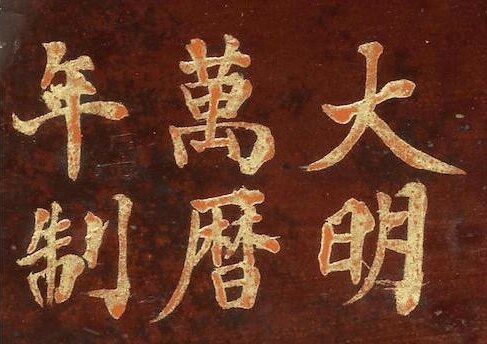![0]()
"The Sky Blue Diamond" weighing 8.01 carats was auctioned at a 'Magnificent jewels & noble jewels auction' in Geneva on November 16, 2016 at a price of US 15.9 million euros. FABRICE COFFRINI / AFP.
GENEVE : Un fort engouement dans la salle et au téléphone a propulsé la vente de Haute Joaillerie Magnificent Jewels and Noble Jewels à Genève ce soir à 136'734'500 CHF / 136'428’215 US$. Grâce à ce montant, les ventes de Haute Joaillerie atteignent un total pour 2016 de 307’753’125 CHF / 311'525’634 US$. Ce résultat éclipse le record annuel précédent établi l’année dernière par Sotheby’s Genève (289,4 M CHF / 300 M $ pour 2015).
S’exprimant à l’issue de la vente, David Bennett, Président mondial du Département International de Haute Joaillerie, a commenté : «Le résultat d’aujourd’hui représente le point culminant d’une année phénoménale pour la Haute Joaillerie à Genève. Au mois de mai, nous avons établi un record mondial pour une vente de joaillerie, et ce soir cet élan s’est maintenu, pour faire de 2016 une année record. Nous constatons toujours un énorme engouement pour les diamants de couleur de la plus haute qualité, mais ce soir le bleu était la star incontestable. Nous avons vu s’établir un nouveau record pour un diamant Deep Blue, et la vente du captivant Sky Blue Diamond pour 17,1 millions US$ – une hausse de plus de 30% par rapport au prix réalisé lors de la vente de ce même diamant chez Sotheby’s en 2012. »
DIAMANTS ROSES
Au premier rang, un diamant rose Fancy Intense Pink taille émeraude pesant 17,07 carats s’est vendu pour 20'825'000 CHF / 20'778'352 $ (1'217'244 US$ par carat)(Lot 336, Est. 11'810’000-14'760’000 CHF / 12-15 millions $).
![0]()
Lot 336. Magnificent 17.07 carats VVS1 Clarity step-cut fancy intense pink diamond ring. Estimate 11,810,000 — 14,760,000 CHF. Sold 20'825'000 CHF / 20'778'352 $ (1'217'244 US$ par carat). Photo: Sotheby's.
Cf. my post: Magnificent 17.07 carats VVS1 Clarity step-cut fancy intense pink diamond ring
Un captivant diamant rose, Fancy Intense Pink d’une clarté Internally Flawless pesant 13,20 carats a été adjugé pour 16'268'750 CHF / 16,232,308 US$ (1'229'720 US$ par carat) (Lot 329, Est. 8,85-13,78 CHF / 9- 14 millions US$). Les deux diamants ci-dessus (lots 336 et 329) ont été achetés par Graff Diamonds Limited.
![0]()
Lot 329. Magnificent 13.20 carats Internally Flawless fancy intense pink diamond ring. Estimate 8,850,000 — 13,780,000 CHF. Sold 16'268'750 CHF / 16,232,308 US$ (1'229'720 US$ par carat). Photo: Sotheby's.
Cf. my post: Magnificent 13.20 carats Internally Flawless fancy intense pink diamond ring
Un nouveau record a étéétabli pour un impressionnant diamant Fancy Light Pink de 40,30 carats, taille poire, qui a trouvé preneur pour 7'550'000 CHF / 7'533'088 US$ (186'925 US$ par carat) (Lot 331, Est. 5,9– 9,8 millions CHF / 6-10 millions US$).
![0]()
Lot 331. Important 40.30 carats VVS2 Clarity pear-shaped fancy light pink diamond ring. Estimate 5,900,000 — 9,830,000 CHF. Sold for 7'550'000 CHF / 7'533'088 US$ (186'925 US$ par carat). World auction record price for a Fancy Light Pink diamond. Photo: Sotheby's.
cf. muy post: Important 40.30 carats VVS2 Clarity pear-shaped fancy light pink diamond ring
DIAMANTS BLEUS
Lot phare de la vente, le « Sky Blue Diamond », un rarissime diamant bleu Fancy Vivid Blue de 8,01 carats s’est vendu pour 17'112’500 CHF / 17'074’168 US$ (2'131’607 US$ par carat) (Lot 337, Est. 14'760’000 CHF – 24'590’000 / 15-25 millions US$)
![0]()
Lot 337.‘The Sky Blue Diamond’, an outstanding and extremely rare Fancy Vivid Blue diamond ring by Cartier weighing 8.01 carats. Estimate Est. 14'760’000 CHF – 24'590’000 / 15-25 millions US$. Sold for 17'112’500 CHF / 17'074’168 US$ (2'131’607 US$ par carat). Photo: Sotheby's.
Cf. my post: “The Sky Blue Diamond”. Superb 8.01 carats Type IIb fancy vivid blue diamond ring, Cartier
Deux autres diamants bleus ont fait vibrer la salle : Une magnifique pierre de 7,74 carats a établi un nouveau record mondial pour un diamant Fancy Deep Blue; neuf enchérisseurs se sont affrontés pour un prix final de 13'737’500 CHF / 13'706'728 US$ (1'770’895 US$ par carat) (Lot 298A, Est. 8,85-13,78m CHF / 9-14m US$).
![01]()
Lot 298A. Magnificent 7.74 carats VVS1 Clarity oval fancy deep blue diamond ring. Estimate 8,850,000 — 13,780,000 CHF. Sold for 13'737’500 CHF / 13'706'728 US$ (1'770’895 US$ par carat). World auction record price for a Fancy Deep Blue diamond. Photo: Sotheby's.
Cf. my post Magnificent 7.74 carats VVS1 Clarity oval fancy deep blue diamond ring
Un deuxième record est tombé lors de la vente d’un magnifique diamant Fancy Light Blue pesant 16,08 carats, qui a trouvé preneur pour 2'172’500 CHF / 2'167’634 US$ (134’803 US$ par carat) (Lot 311, Est. 1,48-2,46m CHF / 1,5-2,5m US$).
![01]()
Lot 311. Important 16.08 carats VVS1 Clarity modified rectangular step-cut fancy light blue diamond ring. Estimate 1,480,000 — 2,460,000 CHF. Sold for 2'172’500 CHF / 2'167’634 US$ (134’803 US$ par carat). World auction record price for a Fancy Light Blue diamond. Photo: Sotheby's.
Un peu de contexte : au cours des deux dernières années, Sotheby’s a réalisé pas moins de deux nouveaux records mondiaux pour les diamants bleus. Le plus récent remonte à novembre 2015, avec la vente du « Blue Moon of Josephine », seul diamant dans l’histoire des ventes aux enchères à avoir été vendu plus de 4 millions US$ le carat, soit un total de 48,5 millions US$ (4'028’941 millions US$ par carat). Ce résultat a éclipsé le précédent record établi par Sotheby’s : le « Zoe Diamond », un diamant Fancy Vivid Blue pesant 9,75 carats s’était vendu pour 32'645'000 US$, soit 3'348'205 par carat.

















































